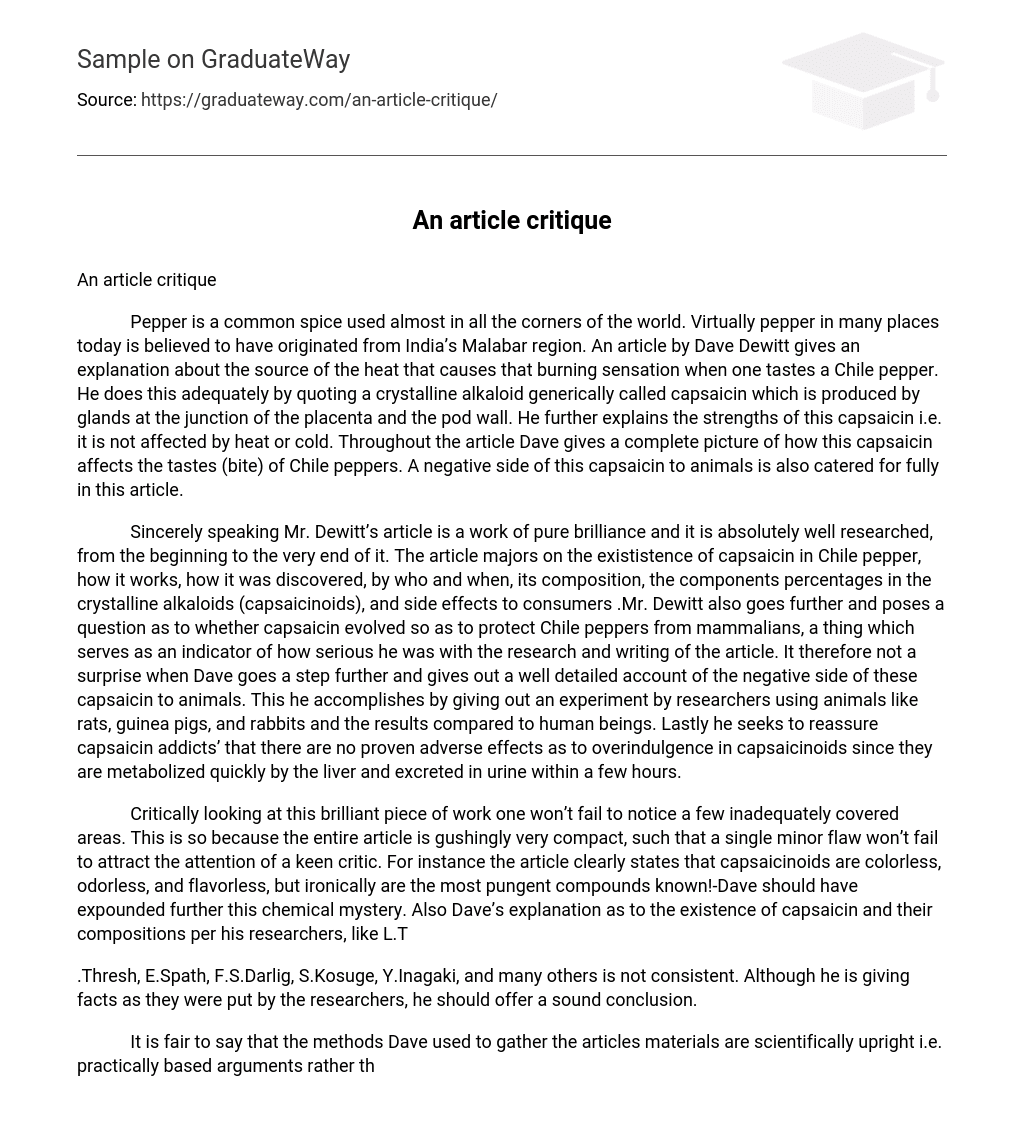Pepper is a common spice used almost in all the corners of the world. Virtually pepper in many places today is believed to have originated from India’s Malabar region. An article by Dave Dewitt gives an explanation about the source of the heat that causes that burning sensation when one tastes a Chile pepper. He does this adequately by quoting a crystalline alkaloid generically called capsaicin which is produced by glands at the junction of the placenta and the pod wall. He further explains the strengths of this capsaicin i.e. it is not affected by heat or cold. Throughout the article Dave gives a complete picture of how this capsaicin affects the tastes (bite) of Chile peppers. A negative side of this capsaicin to animals is also catered for fully in this article.
Sincerely speaking Mr. Dewitt’s article is a work of pure brilliance and it is absolutely well researched, from the beginning to the very end of it. The article majors on the exististence of capsaicin in Chile pepper, how it works, how it was discovered, by who and when, its composition, the components percentages in the crystalline alkaloids (capsaicinoids), and side effects to consumers .Mr. Dewitt also goes further and poses a question as to whether capsaicin evolved so as to protect Chile peppers from mammalians, a thing which serves as an indicator of how serious he was with the research and writing of the article. It therefore not a surprise when Dave goes a step further and gives out a well detailed account of the negative side of these capsaicin to animals. This he accomplishes by giving out an experiment by researchers using animals like rats, guinea pigs, and rabbits and the results compared to human beings. Lastly he seeks to reassure capsaicin addicts’ that there are no proven adverse effects as to overindulgence in capsaicinoids since they are metabolized quickly by the liver and excreted in urine within a few hours.
Critically looking at this brilliant piece of work one won’t fail to notice a few inadequately covered areas. This is so because the entire article is gushingly very compact, such that a single minor flaw won’t fail to attract the attention of a keen critic. For instance the article clearly states that capsaicinoids are colorless, odorless, and flavorless, but ironically are the most pungent compounds known!-Dave should have expounded further this chemical mystery. Also Dave’s explanation as to the existence of capsaicin and their compositions per his researchers, like L.T
.Thresh, E.Spath, F.S.Darlig, S.Kosuge, Y.Inagaki, and many others is not consistent. Although he is giving facts as they were put by the researchers, he should offer a sound conclusion.
It is fair to say that the methods Dave used to gather the articles materials are scientifically upright i.e. practically based arguments rather than theoretically unsupported arguments. Maybe in the shoes of Dave I would have done a shoddy work, but I would have not failed to offer a sound introductory based on issues like the definition of Chile peppers, the difference between Chile peppers and other types of peppers if any. And lastly I would have given the issue of evolution of capsaicinoids in Chile pepper as a protector of Chile peppers from mammalians predators more a tangible backingt and not a mere theory.
Lastly Dave Dewitt is a seasoned writer with many books covering a wide area of studies e.g. fundamentals of heat transfer among others.
Work cited:
http://www.alibris.com/search/books/author/Dewitt,%20David520P accessed on April 12, 2008
http://www.fiery-foods.com/Dave/capsaicin.asp accessed on April 12 2008
http://www.medicinenet.com/script/main/art.asp?articlekey=60525 accessed on April 12, 2008





